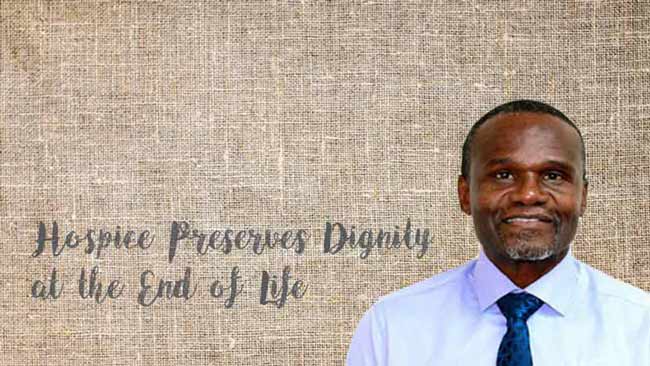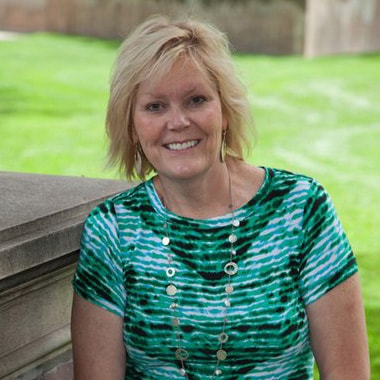

Hospice Preserves Dignity at the End of Life
“People in hospice care often ask these questions, ‘What has happened to me? Why did this occur to me? Why am I the one to die and not another person?’ Those are really spiritual questions,” says George Dzimiri.
Dzimiri is a board-certified chaplain and has served hospice patients and their families for years. “My role in hospice is not to provide an answer, but to let the patient know that somebody is there to listen, listen, listen,” says Dzimiri. “Together, we can walk the journey that seems meaningless and turn it into something meaningful.”
Hospice is care that aims at extending comfort, peace and dignity to individuals who are dying. Hospice providers in the United States care for more than 1.6 million patients and their families at hospice centers, hospitals and in-patient care facilities every year. Hospice also supports a patient’s family with counseling and bereavement care.
Debunking Misconceptions of Hospice Care
A part of Dzimiri’s work is helping people understand incorrect notions of what hospice care involves. He has been teaching spirituality among medical, nursing and allied health students at Loma Linda University in Loma Linda, California.
- Hospice is only for those in their final days of life. Typically, hospice patients are given a prognosis of death within six months. But once a doctor certifies that a patient has a terminal illness, the individual may receive hospice support for as long as necessary. In some cases, hospice patients recover and no longer need immediate end-of-life care.
- Hospice does not allow care from a doctor. Hospice begins when a patient’s medical treatment for a disease or illness has stopped and the person’s condition is deemed incurable. Hospice patients can continue to see their own physician, but hospice also ensures a patient works with an integrated team of healthcare professionals and hospice-trained volunteers, which typically includes a doctor, nurses, caregivers, social workers and hospice chaplains.
- Hospice focuses on death. While hospice care does not center on healing a person, hospice teams do emphasize living each day’s moments with purpose. Hospice care helps patients embrace and be at peace with whatever time they do have with loved ones.
The Path to Improving the Quality of Life for Those He Serves
In 2015, Dzimiri transitioned from working in a hospice facility to opening an in-home care agency — Right at Home in Hemet, California — serving the elderly and adults with a disability in his community. “Hospice has taught me one thing: It’s not about the level of life you lead; it’s what you do with life,” Dzimiri notes. “I process with people where they are at and point them toward where they might want to be.”
He has trained seven of his 20 Right at Home caregivers in hospice care, specifically in dignity therapy, an approach that encourages and restores self-esteem, confidence and a sense of meaning that illness can strip away. “Hospice is a holistic approach to human care,” Dzimiri says. “We just don’t deal with the disease and pain management. We look at the fullness of life, and that, to me, is more important.”
Dzimiri helps each hospice patient and their family find meaning by looking at what the patient has accomplished in life and having the patient contemplate what they have learned in life. He also helps families consider what they can hold onto even if their loved one passes. “I help the patient and family process what’s going on,” says Dzimiri. “I walk with them in the journey. I build a sense of meaningfulness for them.”




